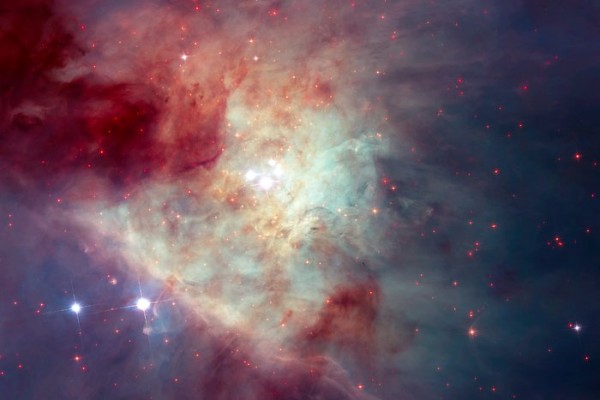By Ana Verayo, | March 22, 2017

This composite image of the Kleinmann-Low Nebula, part of the Orion Nebula complex, is composed of several pointings of the NASA/ESA Hubble Space Telescope in optical and near-infrared light.
Scientists have finally solved a cosmic mystery that lasted for more than 500 years, when three stars broke apart and ran away from the Orion Nebula. Thanks to the Hubble Space Telescope, scientists were able to create a new mosaic image of the Orion Nebula which is located some 1,400 light years away.
Like Us on Facebook
Three stars belonging to the Kleinmann-Low Nebula in the Orion Nebula Complex is a region where these young stars are home for around 600 years until they got separated from each other. More specifically, these stars were ejected into different directions where two of them have been recently observed. These two stars went their different ways in opposite directions however, the third missing star has not been found ever since, until this new study.
According to lead author of the study, Kevin Luhman from Penn State University, these new Hubble Space Telescope observations are strong evidence that three of these stars were ejected from this multiple star system.
Although there are cases of fast moving stars that are still linked to their multiple star systems, these three stars are the youngest to be ejected at a few hundred thousand years old. Based on infrared imagery, they still possess accretion disks from leftover star material during formation.
Hubble was also able to peer through these star systems using its infrared capabilities and saw how swirling gas clouds and cosmic dust enshroud the Orion Nebula complex. In this new image, stars are seen as bright, glowing red spots. One of these is a star moving so rapidly at 125,000 miles per hour according to the European Space Agency.
Astronomers now suggest that this is most likely the third runaway star from the system that was broken apart 540 years back. Further observations will verify this bizarre stellar phenomenon. This new study is published in the Astrophysical Journal Letters.
-
Use of Coronavirus Pandemic Drones Raises Privacy Concerns: Drones Spread Fear, Local Officials Say

-
Coronavirus Hampers The Delivery Of Lockheed Martin F-35 Stealth Fighters For 2020

-
Instagram Speeds Up Plans to Add Account Memorialization Feature Due to COVID-19 Deaths

-
NASA: Perseverance Plans to Bring 'Mars Rock' to Earth in 2031

-
600 Dead And 3,000 In The Hospital as Iranians Believed Drinking High-Concentrations of Alcohol Can Cure The Coronavirus

-
600 Dead And 3,000 In The Hospital as Iranians Believed Drinking High-Concentrations of Alcohol Can Cure The Coronavirus

-
COVID-19: Doctors, Nurses Use Virtual Reality to Learn New Skills in Treating Coronavirus Patients







